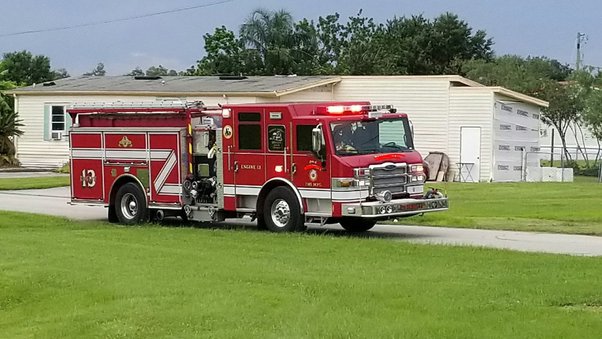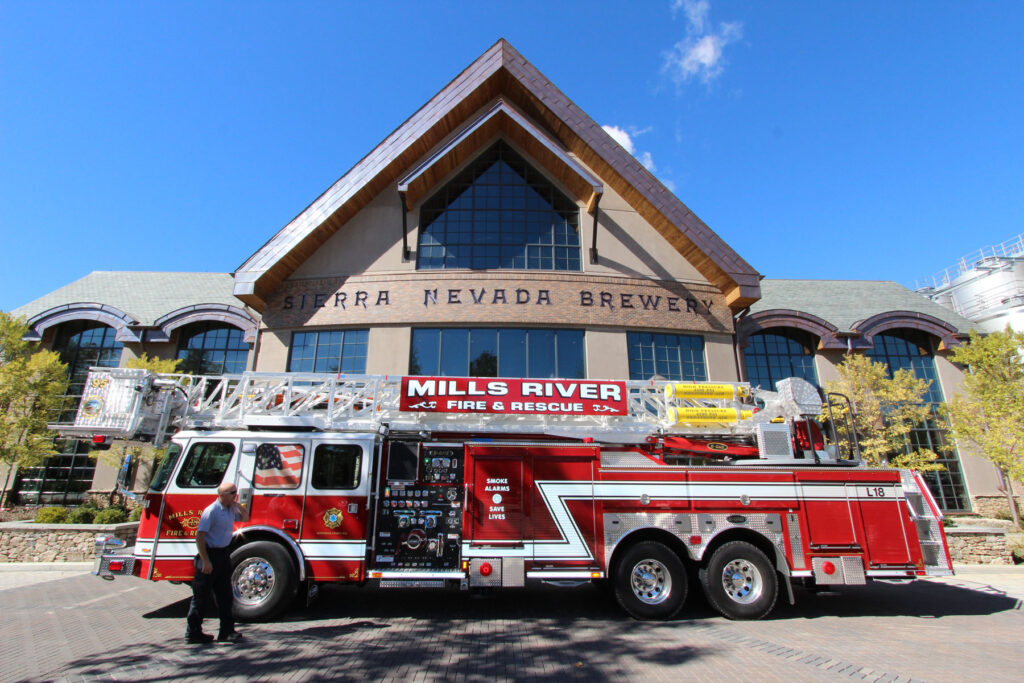In most places, there is no direct charge for the fire department to respond to an emergency fire at your house. Their priority is public safety and extinguishing the fire.
However, there are some exceptions where fees may apply. Fees may apply for false alarms, high water usage, and requesting fire crews to demolish structures for training.
Further, the cost structure for fire department services varies by location. It is advisable to check the local fire department’s website.
Contact them directly, or refer to information provided by your city or municipality to understand any potential fees that may apply.
Factors Affecting Fire Department Costs

Here are some key cost factors associated with a fire department visit to your house.
Type of Fire Incident
Different types of fire incidents may require varying degrees of resources, which can impact costs. For example:
Moreover, a structure fire in a large building may require multiple fire engines, ladder trucks, and specialized equipment to manage.
A wildfire incident may necessitate the deployment of air tankers, helicopters, and other equipment to contain the blaze.
A vehicle fire may be more contained, but still require specialized equipment and personnel to extinguish.
Time
Fire departments may be busier during certain times of the day (e.g., rush hour). It may require additional personnel and resources to respond effectively.
Longer incidents may require more personnel on site for extended periods, which can increase labor costs.
Resources Used
The number of personnel, equipment, and vehicles used during the response can directly influence costs. The number of firefighters and other emergency personnel deployed to the scene affects labor costs.
Further, specialized equipment, such as thermal imaging cameras, hydraulic rescue tools, and self-contained breathing apparatuses (SCBAs). They are essential in certain situations and add to the overall costs.
Fire engines, ladder trucks, and other specialized vehicles have maintenance, fuel, and depreciation costs that contribute to the overall expense.
Location
Urban areas may require more resources due to higher population density and building complexities. Rural areas may need to cover longer distances to reach the incident. As a result, it can increase fuel costs and response times.
In addition, difficult-to-reach areas, such as remote wilderness or areas with poor road conditions. They may require specialized vehicles and equipment, adding to the overall cost.
Damage to Property
Larger fires or incidents with significant structural damage may require more resources for mitigation, including additional personnel and equipment. Property restoration and cleanup may involve additional costs, such as debris removal and temporary repairs.
Administrative Costs
In addition to direct operational costs, there are administrative expenses associated with running a fire department. Regular training and certification of personnel can be costly.
Further, these personnel are essential for planning, coordination, and oversight of operations. Fire departments typically carry insurance for liability and other risks.
Funding Sources
It’s important to note that fire departments are usually funded through a combination of tax revenue, government grants, and public funding sources.
In some cases, jurisdictions may charge fees for certain services. For instance, false alarm responses or specialized services for hazardous materials incidents.
These fees can help offset operational costs but are generally a small portion of the overall funding.
Do Fire Departments Charge to Respond to Emergency Calls?

Yes, fire departments do not generally charge for emergency services. Municipal fire departments, which are typically funded by federal, state, county, or city governments, usually offer their services free of charge.
However, it’s important to note that not all fire departments are municipal. There are also private fire departments and fire protection districts that are funded differently.
Private fire departments, which make up only a small percentage of firefighters in the U.S. operate more like businesses. They will respond to emergencies and charge for their services.
On the other hand, fire protection districts operate under the Fire Protection District Act and are typically funded through property taxes. If you live in an area with a fire protection district. You may see a specific line item on your property tax bill for fire services.
Additionally, some jurisdictions have implemented emergency response fees, which are sometimes referred to as crash taxes or accident response fees.
These fees can be charged for specific services, such as emergency medical care or firefighting. However, many areas have banned or limited these fees.
If you’re ever billed for fire department services. It’s a good idea to check if the charge is for an emergency response fee. If you’re unsure, you can contact your local fire department for more information.
Breakdown of Costs
| Cost Category | Estimated Cost Per Year |
| Labor Costs | $100,000 – $200,000 per hour |
| Equipment Costs | $500,000 – $1 million |
| Infrastructure Costs | $1 million – $5 million |
| Overhead Costs | $500,000 – $1 million per year |
| Vehicle Costs | $500,000 – $1 million per year |
| Training Costs | $500 – $1,000 per firefighter |
| Maintenance and Repair Costs | $50,000 – $100,000 per year |
| Dispatch and Communication Costs | $100,000 – $200,000 per year |
| Medical Supplies | $10,000 – $20,000 per year |
| Specialized Equipment | $50,000 – $100,000 per year |
| Contracted Services | $50,000 – $100,000 per year |
| Legal and Compliance Costs | $50,000 – $100,000 per year |
| Procurement and Inventory Costs | $100,000 – $200,000 per year |
| Community Outreach and Engagement Costs | $25,000 – $50,000 per year |
| Research and Development Costs | $25,000 – $50,000 per year |
False Alarm Fees in Fire Departments

The majority of fire departments do not impose charges for responding to false alarms. However, if repeated false alarms occur at the same location, the fire department may apply fees. The amount varies widely depending on the location and the number of false alarms. And the costs range from $100 to $500 or more.
For instance, in Loudoun County, Virginia, the Sheriff’s Office has a precise policy regarding false alarms, as seen below.
False Alarm Charges
Two false alarms are permitted per calendar year free of charge. After that, the following fee structure applies.
For Residential Properties
- For the third alarm and each subsequent activation, the charge increases by $50.
- On the ninth alarm, the charge increases by $100.
- On the fifteenth alarm, the charge is $1,000.
For Commercial Properties
- For the third alarm and each subsequent activation, the charge increases by $100.
- On the twelfth alarm, the charge increases by $250.
- On the sixteenth alarm, the charge increases by $500.
- On the twentieth alarm, the charge is $4,000.
FAQ’s
How much is it to call out the fire brigade?
In the UK, the minimum call-out charge for 2023/24 is £393.75 per hour. And charges vary depending on the number of fire engines and crew members attending.
Do you have to pay the fire brigade in India?
No, Fire brigades in India are typically part of the social service setup and are not generally charged. Unless used for mock drills or specialized coverage of industrial units.
Final Words
While the fire department prioritizes public safety and extinguishing fires, there may be instances where fees apply. These include false alarms, significant water usage, and specific situations such as demolition requests for training purposes.
Moreover, the cost structure varies by location. Hence, it’s best to check with your local fire department or city/municipality for accurate information. It’s important to be aware of these potential fees to avoid any unexpected financial burdens.
Remember, the fire department is there to help. So it’s crucial to cooperate and follow their guidelines to ensure everyone’s safety.
